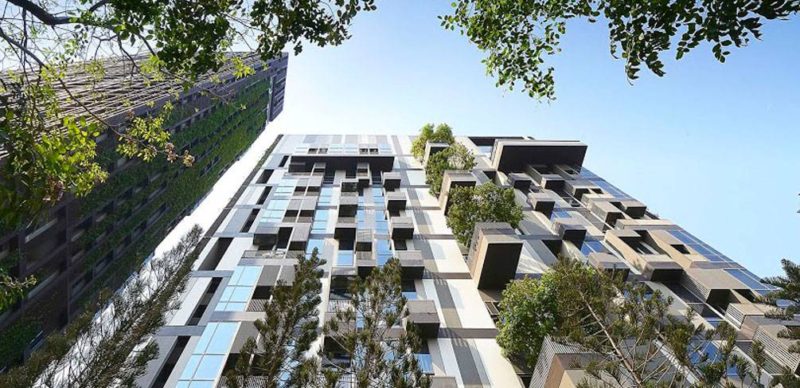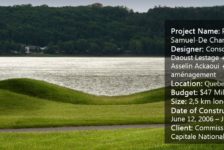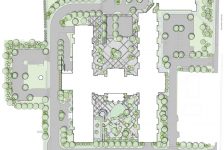We take a closer look at how landscape architecture is influencing architecture. Architecture and landscape architecture pursue the same aim: to provide mankind with diversified indoor or open spaces while addressing individual needs. However, landscape architects in most countries are paid less than architects for the same number of working hours. It is also too seldom the case that a landscape architect is consulted early in the design phase whenever architects and landscape architects work together on a project. This is in spite of the fact that early cooperation could lead to a successful merger between landscape and structure and provide the best outcome. “My belief that all good architecture begins with the land makes me value and appreciate landscape architects.” – Architect Frank Harmon Within this context, both professions should be more eager to foster an atmosphere in which they can learn from one another while building on mutual experiences. But what exactly should landscape architects be sharing with their architect colleagues?
What Do Architects Need to Learn from Landscape Architects?
There is one huge difference between the two professions: While landscape architects mostly create landscapes that fit into their natural surroundings or try to retrieve a part of the original landscape that once defined the appearance of a place, architects build over those natural landscapes to create something completely new. Over time, this has resulted in homes, communities, and entire cities that stand out from their original environment in an inharmonious way and force nature to its knees . Especially in the past two centuries — under the so-called Modernism and other architectural styles that sprouted up in an era of abundant and cheap fossil fuels – lots of houses were built that are far from being in accordance with nature. Not until recent years — and in the face of climate change – have most architects considered the ability of landscape architecture to unite the built and natural environments. Since then, many architects have truly tried to counteract the status quo through ecologically resilient designing, often in collaboration with landscape architects, who have always worked with those design principles. The aim of these new buildings is to reduce their negative impact on their surroundings. A video of “Shma Company Limited” gives an example of how architecture and landscape architecture firms successfully worked together to create stunning, sustainable buildings that “carefully respond to the complexity and diversity of natural and human ecology which composed of climate, topography, history, culture, and social phenomenon.” – as their website informs.
WATCH: Green Impact – Landscape Documentary Film
Should Architects Create Landscapes, Too?
The realization that nature nourishes the city has powerful implications for how cities are built and maintained, as well as for the health, safety, and welfare of each resident. Thanks to the new “Green Technologies”, architecture awakens and sees new possibilities to evolve. Finally, elements such as plants and organic forms are becoming commonplace when architects design new buildings. Even lots of multiple-story buildings that accommodate living trees will be found in the future. On one hand, it seems that this way of designing is future-oriented, but on the other hand, it can be seen as a more or less brilliant adaptation of what landscape architecture has created from the beginning: Landscapes. Landscape architects are able to create green oases in the middle of cities through parks, gardens, and green roofs. Now it seems that architects want to make their new buildings look like green hills among the older, greyish structures. The picture below of this beautiful green wall from the world-renowned Patrick Blanc is just another example of Architects trying to cover their walls in green landscapes.

Green wall. Photo credit: Patrick Blanc
Landscape Architects Discovered These Tools More Than 150 Years Before Architects
These new vertical landscapes are the way architecture is finally committing to play its part in improving the health of the environment — through mitigating the urban heat island effect, filtering air, and reducing water runoff. The two Milanese buildings called “Bosco Verticale” (literally “Vertical Forest”) by Boeri Studio deal with the concept of regenerating the lost forests on the ground within the inhabitable space of buildings.
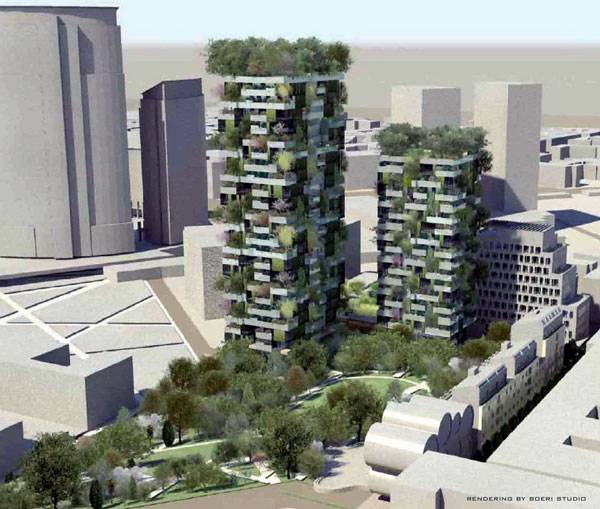
“Stefano Boeri – 米蘭垂直森林 Bosco Verticale – rendering 04.jpg” by 準建築人手札網站 Forgemind ArchiMedia. Licensed under CC BY-SA 2.0 via Flickr

“Stefano Boeri – 米蘭垂直森林 Bosco Verticale – rendering 01.jpg” by 準建築人手札網站 Forgemind ArchiMedia. Licensed under CC BY-SA 2.0 via Flickr
Failed Architecture: When Architects Forget to Think in a Broader Context
It seems like basic knowledge, yet so many architects tend to forget about the fact that their buildings – as well as every open space — are always in large and complex settings. A major problem happens when architects treat their buildings in isolation from their (urban) context. While designing a building, the systems may appear to be well engineered within their original defined parameters — but they will inevitably interact with many other systems once they are built.
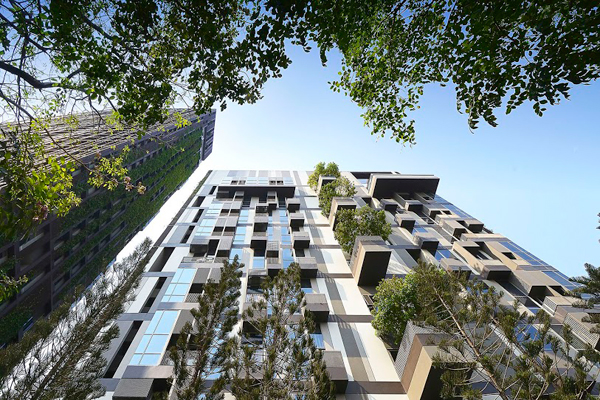
Green facade.Photo Credit: Wison Tungthunya, Santana Petchsuk, Chaichoompol Vathakanon
Concluding the Influence that Landscape Architecture has on Architecture
Architecture is often associated with aesthetic and functional design, whereas the link to nature and reduced impact on the environment is still missing in most new buildings. This often comes from architects who don’t feel responsible for environmental changes. The new ecological buildings with their (vertical) greenery all over the facades are the beginning of understanding challenges that both professions face: Buildings and open spaces in urban contexts are just small pieces of the bigger whole. In conclusion, architecture needs to learn from landscape architecture how to not only design something new, but also how to respect the natural initial elements of the site, as well as the long-term changes and the impact on the urban context. Through different landscape architecture design principals, the negative effects of architecture on its surroundings can change for the better. Modern buildings often seem to scream for the need to get back to our roots in nature. Therefore, landscape architects should provide architects with suitable design principles to help them come a step closer to their new, innovative understanding. Do you know other principles of landscape architecture that are influencing Architecture? Article by Sophie Thiel Recommended Reading:
- Designing the Sustainable Site: Integrated Design Strategies for Small Scale Sites and Residential Landscapes by Heather L. Venhaus
- Lifelong Landscape Design by Hugh Dargan



